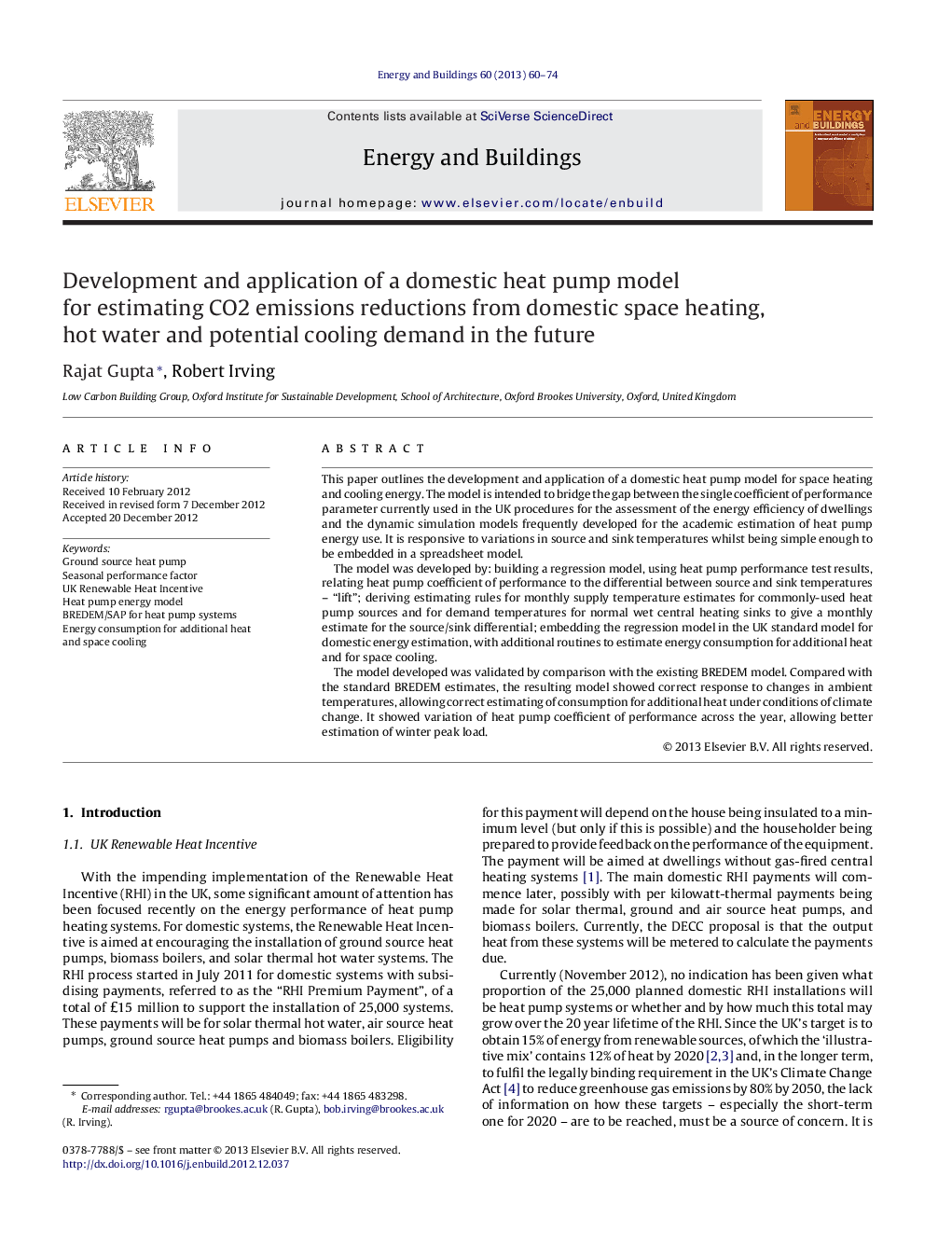| کد مقاله | کد نشریه | سال انتشار | مقاله انگلیسی | نسخه تمام متن |
|---|---|---|---|---|
| 263335 | 504073 | 2013 | 15 صفحه PDF | دانلود رایگان |

This paper outlines the development and application of a domestic heat pump model for space heating and cooling energy. The model is intended to bridge the gap between the single coefficient of performance parameter currently used in the UK procedures for the assessment of the energy efficiency of dwellings and the dynamic simulation models frequently developed for the academic estimation of heat pump energy use. It is responsive to variations in source and sink temperatures whilst being simple enough to be embedded in a spreadsheet model.The model was developed by: building a regression model, using heat pump performance test results, relating heat pump coefficient of performance to the differential between source and sink temperatures – “lift”; deriving estimating rules for monthly supply temperature estimates for commonly-used heat pump sources and for demand temperatures for normal wet central heating sinks to give a monthly estimate for the source/sink differential; embedding the regression model in the UK standard model for domestic energy estimation, with additional routines to estimate energy consumption for additional heat and for space cooling.The model developed was validated by comparison with the existing BREDEM model. Compared with the standard BREDEM estimates, the resulting model showed correct response to changes in ambient temperatures, allowing correct estimating of consumption for additional heat under conditions of climate change. It showed variation of heat pump coefficient of performance across the year, allowing better estimation of winter peak load.
► Describes development and validation of a generalised heat pump energy model.
► Provides more detailed estimates from a dwelling energy model than single SPF.
► Responds to temperature variations such as under conditions of climate change.
► Relationships derived from thermodynamic theory and parameters from test results.
► Provides estimates for secondary system energy use in bivalent mode.
Journal: Energy and Buildings - Volume 60, May 2013, Pages 60–74